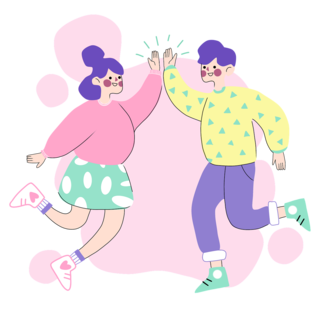Happiness
3 Proven Models for the Pursuit of Happiness
... including a pathway to well-being through well-doing.
Posted November 26, 2021 Reviewed by Tyler Woods
Key points
- A person’s happiness levels are influenced by genetic factors, life circumstances and intentional behaviors.
- Engaging in eudaimonic activities that highlight human virtues, promote growth and foster fulfillment can make us happier.
- To prolong the initial boost from positive life changes, keep engaging with the new events in different bottom-up and top-down ways.
- Various factors, including person-activity fit, predict the success of positive behaviors increasing happiness levels.
For decades, researchers have explored the factors that contribute to human happiness. Among the best-known findings, the Happiness Pie Chart (2005) proposed that 50 percent of the differences in our happiness levels are attributed to our genes, 10 percent are due to our circumstances, and the remaining 40 percent are due to our behaviors. Unsurprisingly, the pie left a sweet aftertaste in many happiness-seekers, as it afforded considerable room for finding joy—even when we were dealt an unfavorable hand in life.
After 15 years of research into the pursuit of happiness, psychologists Sonja Lyubomirsky and Kennon Sheldon revisited their original theory in a recent article. In agreement with some of their critics, they concurred that they had likely overestimated the slice of the pie that was initially attributed to intentional behaviors. While the benefits of positive psychology interventions are real, their effects, the authors concluded, may not be as big. However, even if the pie chart may have “outlived its usefulness,” the authors highlight its significance in inspiring a wealth of subsequent studies on the mechanisms that underlie well-being.
There are three models derived from the Happiness Pie and the Sustainable Happiness Model, that show that happiness can be successfully pursued, given that you have the “will” and the “proper way” to do it.
Eudaimonic Activity Model
Eudoimania is a pathway to well-being through well-doing—specifically, reaching our potential by living a life of virtue and engaging in inherently meaningful endeavors. The word eudaimonie comes from ancient Greece, where philosophers like Socrates and Aristotle wrote that a good life was all about improving the self, engaging in pro-social behaviors, and nurturing connections with others. Psychological research has shown plenty of support for these eudaimonic theories. According to the Eudaimonic Activity Model, for example, engaging in activities and goals that highlight human virtues, promote growth, and foster fulfillment can make people happier. Pursuing excellence, volunteering time, giving money to those in need, expressing gratitude, developing skills, persevering at valued goals despite obstacles are all considered eudaimonic activities. Practicing these behaviors can satisfy our basic psychological needs of competence, autonomy, and relatedness and increase our subjective well-being levels.

Hedonic Adaptation Prevention Model
Many people are convinced that if they could only achieve the right circumstances—the perfect partner, the dream job, the nice house—they will be happy. But what we often don’t realize is that even after we secure these desired circumstantial variables, they will likely not have the powerful, long-lasting effects on our happiness levels that we imagine. The reason—hedonic adaptation. Humans get used to things. It’s our curse and our salvation. After the initial boost in happiness, the new house, the new spouse, and the new job will eventually become the new norm. And the status quo is hardly known for its remarkable, joy-amplifying properties.
Is there a way to prolong the burst of bliss we receive from various life changes and circumstances?
Yes, according to the Hedonic Adaptation Model.
The key is to continue to engage with the new events in a variety of bottom-up and top-down ways that will keep budging the needle of our internal happiness meter. For example, once you have bought your dream house, you could host dinner parties or discover new favorite spots in your neighborhood. As Sheldon and Lyubomirsky (2019) write, experiencing the house in novel and positive ways will provide you with momentary positive emotions in connection with your new house and “feed the fire” of your initial boost of happiness. Furthermore, you could resist the temptation of thinking about all the other even nicer houses that you could or should have. Instead, let your gratitude and appreciation for what is already yours become a reminder of all the ways that your life has been enriched by your new house.

Positive Activity Model
If we can indeed make ourselves happier through intentional activities, it’s important to explore the what, why, when, how of these happiness behaviors. To begin with, in order to obtain the optimal benefits from scientifically proven happiness-boosting interventions, one has to be motivated to become happier and be willing to put effort into their pursuit of happiness. As such, the Positive Activity Model delineates the conditions under which various intentional activities can increase well-being.
What is it about the person, the activity, and the interaction of the two that will yield the best outcomes?
Researchers have conducted countless experiments to explore how different variables, including type and frequency of activities, a person’s cultural background, amount of effort, and motivation, play a role in the effectiveness of interventions. The results of these studies offer a fascinating glimpse into what makes us happy. For example, counting too many blessings may not necessarily lead to increases in happiness and certain activities may work better than others for different people (for instance, extraverts may benefit more from interventions that involve social interactions, while younger people might be more inclined towards interventions that can be performed using their mobile phones.)
How do these interventions work?
According to the model, positive activities fulfill basic psychological needs, as well as usher a spur of positivity to people’s lives through not only their behaviors, but also their thoughts and emotions. Gratitude interventions, for example, can help people think more positively about their lives, thus, boosting their levels of happiness.
As studies continue to probe into the mechanisms of our well-being, Sheldon and Lyubomirsky (2019) offer a hopeful conclusion to what the research points to so far:
“The pursuit of happiness requires selecting self-appropriate and eudaimonic-type activities (rather than chasing after positive emotions directly); investing sustained (rather than desultory) effort in those activities; and also, practicing them in a varied and changing manner (rather than doing them the same way each time). By such means, people can create for themselves a steady inflow of engaging, satisfying, connecting, and uplifting positive experiences, thereby increasing the likelihood that they remain in the upper range of their happiness potentials.”
Facebook image: Bricolage/Shutterstock
LinkedIn image: Alena Ozerova/Shutterstock
References
Sheldon, K. M., & Lyubomirsky, S. (2019). Revisiting the Sustainable Happiness Model and Pie Chart: Can Happiness Be Successfully Pursued? The Journal of Positive Psychology, 1-10.
Steger, M. F., Kashdan, T. B., & Oishi, S. (2008). Being good by doing good: Daily eudaimonic activity and well-being. Journal of Research in Personality, 42(1), 22-42.
Lyubomirsky, S., Dickerhoof, R., Boehm, J. K., & Sheldon, K. M. (2011). Becoming happier takes both a will and a proper way: An experimental longitudinal intervention to boost well-being. Emotion, 11, 391–402.
Lyubomirsky, S., Sheldon, K. M., & Schkade, D. (2005). Pursuing happiness: The architecture of sustainable change. Review of General Psychology, 9, 111–131.
Lyubomirsky, S. (2010). Hedonic adaptation to positive and negative experiences. In S. Folkman (Ed.), The Oxford hand- book of stress, health, and coping (pp. 200–224). New York: Oxford University Press.
Nelson, S. K., & Lyubomirsky, S. (2014). Finding happiness: Tailoring positive activities for optimal well-being benefits. In M. Tugade, M. Shiota, & L. Kirby (Eds.), Handbook of positive emotions (pp. 275–293). New York, NY: Guilford.
Pressman, S. D., Kraft, T. L., & Cross, M. P. (2015). It’s good to do good and receive good: The impact of a ‘pay it forward’ style kindness intervention on giver and receiver well-being. The Journal of Positive Psychology, 10(4), 293–302.
Dickerhoof, R. M. (2007). Expressing optimism and gratitude: A longitudinal investigation of cognitive strategies to increase wellbeing. Dissertation Abstracts International, 68, 4174.
Sheldon, K. M., & Lyubomirsky, S. (2012). The challenge of staying happier: Testing the hedonic adaptation prevention model. Personality and Social Psychology Bulletin, 38, 670–680.
Ryan, R. M., & Deci, E. L. (2017). Self-determination theory: Basic psychological needs in motivation, development, and wellness. New York: Guilford.
Sheldon, K. M. (2017). Understanding the good life: Eudaimonic living involves well-doing, not well-being. In J. Forgas & R. Baumeister (Eds.), Sydney symposium 2017: The social psychology of the good life. Sydney, Australia: Psychology Press.
Layous, K., & Lyubomirsky, S. (2014). The how, why, what, when, and who of happiness: Mechanisms underlying the success of positive interventions. In J. Gruber & J. Moscowitz (Eds.), Positive emotion: Integrating the light sides and dark sides (pp. 473–495). New York, NY: Oxford University Press.




